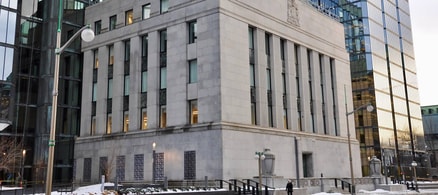The inflation story in Canada
Let’s take a quick look at inflation’s 2021 track record:
- January – 1 per cent
- February – 1.1 per cent
- March – 2.2 per cent
- April – 3.4 per cent
- May – 3.6 per cent
- June – 3.1 per cent
- July – 3.7 per cent
Those numbers reflect year-over-year changes. The monthly Consumer Price Index rose 0.6 per cent in July 2021, ahead of the 0.3 per cent increase posted in June.
But historically speaking, says Woodgate Financial partner and senior financial consultant Jason Pereira, what Canada and much of the world is experiencing now does not qualify as high inflation.
“Raging inflation was double-digit per year inflation, where unions were negotiating salary increases of 13 per cent to 15 per cent per year for five years and the manufacturers came away thinking they got a good deal,” he says.
“What we have now is inflation that is higher than historical, but still not unusual — even for developing markets. It’s not normal to us, but it’s normal to many,” he adds.
Today’s inflation is transitory
Mark Yamada, president and CEO of PUR Investing in Toronto, shares the central banks’ view that today’s inflated prices are temporary.
He points out the higher prices consumers are paying for food, gasoline, lumber and used cars can all be traced back to supply chain disruptions caused by the pandemic. As industries regain their pre-pandemic production capacities, he believes the supply/demand imbalances currently generating higher prices will work themselves out.
“There’s nothing in the numbers that would concern me at all,” Yamada says. “I’m looking for disruptions that could constrain the supply chain more permanently over the next 18 months to two years.”
Both Yamada and Pereira see inflation as somewhat of a self-fulfilling prophecy. If investors (and advisors who may be too young to have experienced a period of truly high inflation) think inflation is a problem, their reactions can wind up cementing its presence in the economy.
“If people expect inflation, they start making business decisions that incorporate inflation,” Pereira says.
Don’t overreact
Pereira sums up the current debate around inflation this way:
“It’s a media and pundit story, arguing about what the future’s going to be,” he says. “How many times have you been told about hyper or raging inflation potentially coming in the future, and they’ve been wrong every time for ... decades.”
Pereira advises ignoring the “bias toward action” in the financial planning industry and avoiding any drastic changes to your portfolio that are based on whether you or your advisor think they can guess where inflation will be a year from now.
“Those are market-timing decisions — and market-timing decisions, historically, do not work out,” he says.
Realigning your portfolio to get more exposure to “inflation-proof” assets, like commodities, real estate and emerging-market bonds, isn’t a move you should be making to ward off short-term inflation.
“If you’re in a fully diversified portfolio, guess what? You probably have exposure to all of that already,” Pereira says.
Three assets for an inflation-ready portfolio
But diversification can mean different things to different financial planners.
For those who still subscribe to traditional asset-allocation theory, that likely means a mix of income-producing products like bonds and more growth-oriented stocks. A diverse portfolio in this case might still be bogged down with 40-to-60 per cent worth of bonds that pay less than three per cent.
That won’t cut it for most investors, particularly those nearing retirement.
“Where does the retiree go?” Yamada wonders. “They’ve been buying the wrong stuff for the last several years, and they’re going to have to find something to substitute for those bonds that have always been in their portfolios. Advisors are behind the curve. They don’t know what to tell people.”
Yamada says that for a portfolio to generate real earnings, it needs to be less conservative and more realistic about what assets are actually performing. He suggests three that should not only outperform inflation, but provide long-term value:
- Farmland. With exposure to both commodities and the real estate they sprout from, Yamada says farmland “is the best inflation hedge.” There are a variety of farmland-based REITs that give investors easy access to the sector, as well as agriculture-based funds and ETFs.
- Canadian bank stocks. “The banks have always been a good place to invest for Canadians,” he says. “They have ultimate price control. They’re too big to fail.”
- The Nasdaq Next Generation 100 Index. Tracking the largest 100 companies outside the Nasdaq 100, the NGX represents a chance to invest in tech companies that Yamada feels will be instrumental in providing solutions for the world’s most serious problems.
“It doesn’t sound like the kind of conservative portfolio that people in retirement should be looking for,” he says, “but that is it.”





